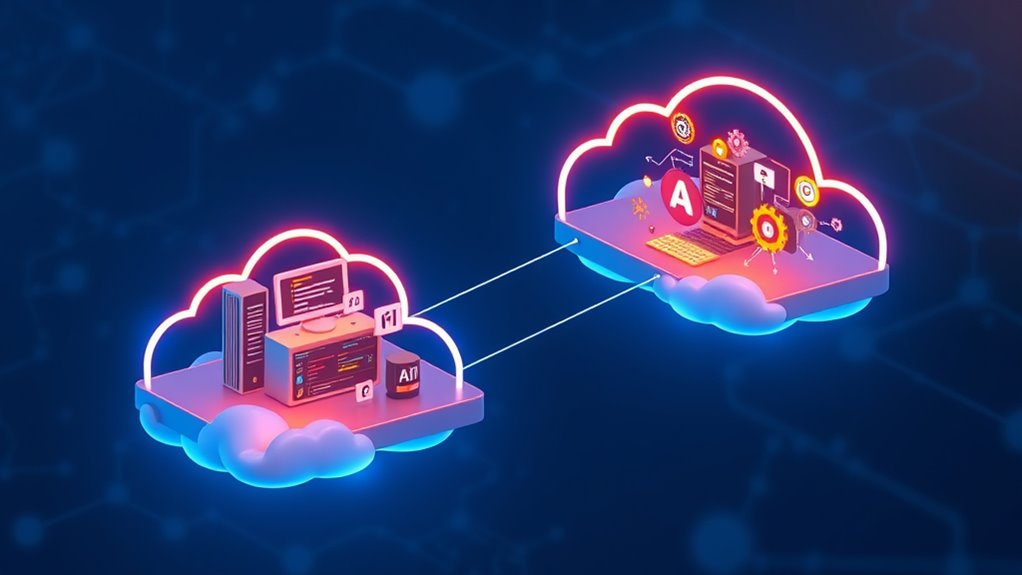Platform as a Service (PaaS) and Integration Platform as a Service (iPaaS) serve distinct purposes in cloud computing. PaaS provides a complete environment for developing, testing, and deploying applications while managing the underlying infrastructure. In contrast, iPaaS specifically focuses on connecting existing applications and systems, enabling seamless data exchange and workflow automation. While PaaS supports the entire application development lifecycle, iPaaS excels at system integration and API management. Understanding these differences helps organizations choose the right solution for their unique needs.

The evolving landscape of cloud computing has introduced essential tools that streamline both software development and system integration processes. Two significant platforms, Platform as a Service (PaaS) and Integration Platform as a Service (iPaaS), serve distinct purposes in the modern technology ecosystem. While they may appear similar at first glance, their core functionalities and use cases differ substantially.
PaaS provides developers with a thorough cloud-based environment for building, deploying, and managing applications without the burden of infrastructure management. It includes essential development tools like integrated development environments, middleware, and database management systems. Organizations can purchase computing resources on-demand, allowing development teams to focus on coding and innovation rather than wrestling with hardware concerns. The accelerated adoption of PaaS solutions during the COVID-19 pandemic helped facilitate remote work and learning environments.
In contrast, iPaaS specializes in connecting and integrating multiple applications and services across an organization’s technology landscape. This platform excels at managing APIs, synchronizing data, and automating workflows between different systems, whether cloud-based or on-premises. iPaaS reduces the need for complex custom programming traditionally required for system integration, making it easier for businesses to maintain seamless data flow and system interoperability. The platform ensures complete visibility for effective troubleshooting and debugging of integration operations. The platform’s user-friendly interface enables non-technical staff to manage integrations effectively without extensive coding knowledge.
The primary distinction lies in their core purposes: PaaS supports the entire application development lifecycle, while iPaaS focuses specifically on integration capabilities. PaaS platforms provide tools for coding, testing, and deployment, whereas iPaaS concentrates on connecting existing systems and facilitating smooth data exchange between them.
Organizations often use PaaS when they need to develop custom applications from scratch, while they turn to iPaaS when they need to connect multiple existing applications and ensure they work together effectively.
Both platforms offer significant benefits to modern businesses. PaaS accelerates software development by removing infrastructure complexity and providing built-in scalability. Meanwhile, iPaaS simplifies the integration of diverse systems, reduces IT costs, and provides robust API management capabilities.
Together, these platforms represent essential tools in the modern enterprise technology stack, each serving its unique purpose in enabling digital transformation and operational efficiency.
Frequently Asked Questions
What Security Measures Are Typically Implemented in IPAAS and Paas Platforms?
Both iPaaS and PaaS platforms implement robust security measures to protect data and applications.
Key features include encryption at rest and in transit, multi-factor authentication, and role-based access controls.
These platforms maintain audit logging and compliance reporting while utilizing secure protocols like SFTP and HTTPS.
They also provide centralized monitoring, automated alerts, and disaster recovery solutions to safeguard against security breaches and guarantee business continuity.
How Do Pricing Models Differ Between IPAAS and Paas Solutions?
PaaS platforms typically use pay-as-you-go pricing based on actual resource consumption like compute power, storage, and bandwidth.
In contrast, iPaaS solutions generally follow subscription-based models with costs determined by integration volume, data processed, or user counts.
While PaaS may include additional charges for optional services like databases, iPaaS often offers tiered plans with pre-built connectors and automation tools.
Both models eliminate upfront infrastructure costs, shifting to operational expenses.
Can IPAAS and Paas Be Used Together in the Same Project?
Yes, iPaaS and PaaS can effectively work together in projects. iPaaS handles the integration and data flow between different systems, while PaaS provides the platform for building and hosting applications.
This combination allows organizations to:
- Develop applications on PaaS platforms
- Connect these applications to other systems using iPaaS
- Automate workflows across multiple platforms
- Maintain data synchronization
- Scale operations efficiently
The two technologies complement each other, enhancing overall project functionality.
Which Programming Languages Are Most Commonly Supported by Paas Providers?
Major PaaS providers commonly support several key programming languages:
- Java – Extensively supported across platforms like AWS Elastic Beanstalk and GCP App Engine
- Python – Widely available due to its versatility in web and AI applications
- Node.js – Popular for server-side JavaScript development
- PHP – Common for web application deployment
- Ruby – Supported for rapid web development
Additionally, Go, .NET, and TypeScript are gaining increased support among PaaS providers.
What Are the Average Implementation Times for IPAAS Versus Paas Solutions?
iPaaS solutions typically take a few weeks to two months to implement, leveraging pre-built connectors and low-code environments for faster deployment.
PaaS implementations generally require several weeks to several months, due to more complex setup requirements and custom development needs.
While iPaaS focuses on rapid integration with ready-made tools, PaaS involves broader application development cycles, including environment configuration, testing, and security implementations.









